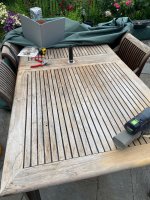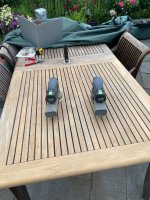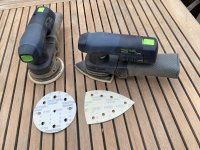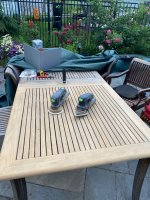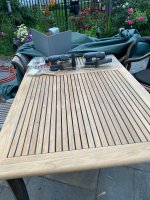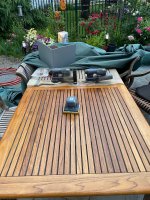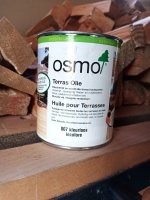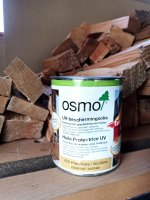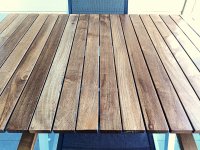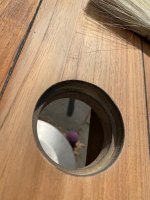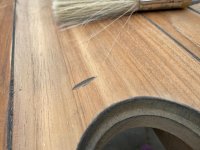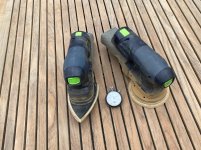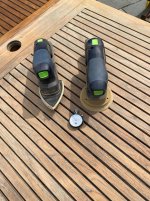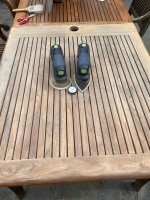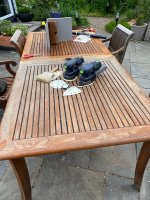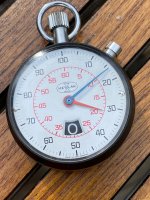Cheese
Member
Now here's a yearly maintenance regimen that I would be more than happy to do without. It's nice to have friends over and to serve cocktails and food on a beautiful surface as opposed to something dragged up from the bottom of the swamp.
So, every year the drill remains the same...refinish the teak table on the patio. I've done this so many times that I can't count the times. I've done this with a different Festool sander every year, first the original underpowered ETS 125, tried it with the RS 2, used the Rotex 125, used the early original DTS 125, the next year the ETS EC 125 using both a 125 pad and a 150 pad, even tried the LS 130 for both the sanding of the flat surfaces and sanding of the rounded edge profile. At every juncture, the sanding process was a huge time waster.
This year I decided that if I had two useful arms, I could employ two sanders at the same time...as bimbo boy says, what do you have to lose?
So this year I decided the ETSC and the DTSC would be my sanders of choice. I was mightly impressed as these brought the sanding time down to at least half of what I usually need.
I did notice that the ETSC was easier to manage because it is symmetrical and better balanced. If you let go of it it stays upright and just slowly shuttles across the table in a fairly tight orbital circle. The DTSC however, if left on its own will simply topple over and fall on its side.
So the sanding is helter skelter with both sanders traversing different paths but towards the end of the sanding session, most of the surface has been traversed and I then touched up specific areas with the ETSC. Sweet...this is exactly the approach I will take next year but maybe I'll substitute a second ETSC instead of the DTSC.
[attachimg=1]
[attachimg=2]
[attachimg=3]
[attachimg=4]
[attachimg=5]
[attachimg=6]
So, every year the drill remains the same...refinish the teak table on the patio. I've done this so many times that I can't count the times. I've done this with a different Festool sander every year, first the original underpowered ETS 125, tried it with the RS 2, used the Rotex 125, used the early original DTS 125, the next year the ETS EC 125 using both a 125 pad and a 150 pad, even tried the LS 130 for both the sanding of the flat surfaces and sanding of the rounded edge profile. At every juncture, the sanding process was a huge time waster.
This year I decided that if I had two useful arms, I could employ two sanders at the same time...as bimbo boy says, what do you have to lose?
So this year I decided the ETSC and the DTSC would be my sanders of choice. I was mightly impressed as these brought the sanding time down to at least half of what I usually need.
I did notice that the ETSC was easier to manage because it is symmetrical and better balanced. If you let go of it it stays upright and just slowly shuttles across the table in a fairly tight orbital circle. The DTSC however, if left on its own will simply topple over and fall on its side.
So the sanding is helter skelter with both sanders traversing different paths but towards the end of the sanding session, most of the surface has been traversed and I then touched up specific areas with the ETSC. Sweet...this is exactly the approach I will take next year but maybe I'll substitute a second ETSC instead of the DTSC.
[attachimg=1]
[attachimg=2]
[attachimg=3]
[attachimg=4]
[attachimg=5]
[attachimg=6]

